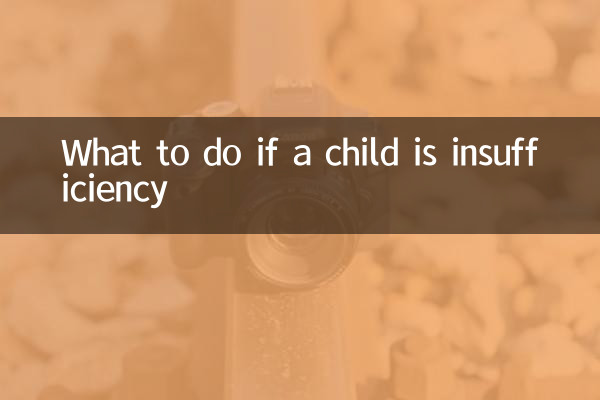What to do if children have intussusception: A complete analysis of symptoms, treatment and prevention
Instussusception is one of the common acute abdominal symptoms in infants and young children, and it is often found in children between 3 months and 3 years old. Recently, discussions on intussusception in infants and young children have become more popular on social media, and many parents have delayed treatment due to lack of relevant knowledge. This article will combine the hot topics over the past 10 days to structure the symptoms, treatment methods and preventive measures of intussusception to help parents quickly identify and respond to this emergency situation.
1. What is intussusception?

Instussusception refers to a section of intestinal canal inserted into the adjacent intestinal cavity, resulting in intestinal obstruction and blood circulation disorders. If not handled in time, it may cause intestinal necrosis, perforation and even life-threatening.
| Common age of onset | High incidence season | Male-female ratio |
|---|---|---|
| 3 months to 3 years old | Spring and Autumn | Male: Female ≈2:1 |
2. Typical symptoms of intussusception
According to recent pediatric emergency data, the clinical manifestations of intussusception have the following characteristics:
| symptom | Frequency of occurrence | Remark |
|---|---|---|
| Crying out of sex | 85%-90% | Attack 10-20 minutes apart |
| Vomit | 70%-80% | In the early stage, it is the contents of the stomach and later it contains bile |
| Jam-like stool | 50%-60% | Advanced symptoms |
| Abdominal lump | 40%-50% | Sausage-like lump on the upper right abdomen |
3. Emergency treatment and treatment methods
Recent medical hotspots have emphasized that the golden treatment time for intussusception is within 24 hours after the onset of the disease:
| Treatment method | Applicable | Success rate |
|---|---|---|
| Air/Liquid Enema Reset | Within 24 hours of onset | 80%-95% |
| Surgical Reset | Enema failure or intestinal necrosis | 100% (necrotic intestinal segments need to be removed) |
4. Preventive measures and precautions
In light of recent pediatric experts' suggestions, parents should pay attention to the following prevention points:
| Preventive measures | Specific methods | Scientific basis |
|---|---|---|
| Add complementary food reasonably | Starting from 4-6 months, from thin to thick | Reduce intestinal irritation |
| Avoid sudden cold | Pay attention to keeping your abdomen warm | Prevent abnormal intestinal peristalsis |
| Rotavirus vaccination | Vaccination from 2 months old | Reduce the risk of viral enteritis |
5. Common misunderstandings for parents
According to recent online consultation data analysis, parents have the following misunderstandings about intussusception:
1.Misconception 1:"If a child doesn't cry, it's not instussusception" - about 15% of cases show mental depression rather than crying
2.Misunderstanding 2:"Enema treatment is dangerous" - in fact, the trauma of enema reduction is much smaller than that of surgery
3.Misconception 3:"No recurrence after one cure" - the recurrence rate is about 5%-10%, and it needs to be observed continuously
6. Latest treatment progress
According to recent medical journals, two important progress has occurred in the field of intussusception treatment:
1.Ultrasonic boot reset:Some hospitals have adopted ultrasound instead of X-ray guidance to reduce radiation exposure
2.Fast-channel diagnosis and treatment:Many children's hospitals have opened green channels for intussusception, and the average treatment time has been shortened to 1.5 hours
Conclusion:
Instussusception is a pediatric emergency, and parents need to master the typical triple symptoms of "crying + vomiting + bloody stool". Once instussusceptible, seek medical treatment immediately instead of observation and waiting. Recent clinical data show that the non-surgical cure rate of children who visited the hospital within 12 hours of the onset is as high as 98%. Remember: timely treatment is the key to avoiding serious complications!

check the details

check the details